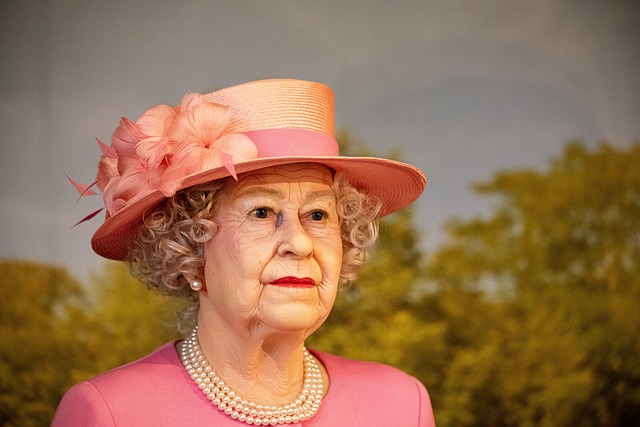Queen Elizabeth I, also known as the Virgin Queen, was the daughter of King Henry VIII and Anne Boleyn. She reigned as the Queen of England and Ireland from 1558 until her death in 1603. During her reign, England experienced a period of stability and prosperity, known as the Elizabethan era. While Queen Elizabeth I was raised in a predominantly Protestant country, her personal religious beliefs and affiliations have been a subject of debate among historians.
Table of Contents
The Religious Beliefs of Queen Elizabeth: A Look into Her Presbyterian Faith
Queen Elizabeth I, the iconic monarch of England, is often remembered for her strong leadership and the golden age that flourished under her reign. While her religious beliefs have been a subject of much debate, there is evidence to suggest that she held Presbyterian leanings. In this article, we will delve into the religious beliefs of Queen Elizabeth and explore her potential Presbyterian faith.
To understand Queen Elizabeth’s religious inclinations, we must first examine the religious landscape of her time. England was in the midst of a religious upheaval, with the Protestant Reformation challenging the authority of the Catholic Church. Queen Elizabeth’s father, King Henry VIII, had broken away from Rome and established the Church of England, which became the official religion of the country. However, the religious climate remained volatile, with various factions vying for influence.
During her reign, Queen Elizabeth faced pressure from both Catholic and Protestant factions. While she maintained a moderate stance, she leaned towards Protestantism. This is evident in her religious policies, such as the Act of Uniformity, which established the Book of Common Prayer as the standard for worship in England. The Book of Common Prayer was heavily influenced by Presbyterian theology, emphasizing simplicity and the authority of Scripture.
Furthermore, Queen Elizabeth’s personal relationships provide insight into her religious beliefs. She had a close friendship with John Knox, a prominent Scottish Presbyterian minister. Knox was known for his fiery sermons and his advocacy for Presbyterianism. It is believed that Queen Elizabeth sought his counsel on religious matters, indicating her interest in Presbyterian theology.
Another piece of evidence supporting Queen Elizabeth’s Presbyterian leanings is her preference for plain and unadorned worship. Presbyterianism emphasizes simplicity in worship, rejecting elaborate rituals and decorations. Queen Elizabeth’s own religious practices reflected this preference, as she favored simple and straightforward ceremonies. This aligns with the principles of Presbyterianism and suggests that she may have embraced this faith.
Additionally, Queen Elizabeth’s religious policies and actions demonstrate her alignment with Presbyterian beliefs. She supported the establishment of Protestant churches in Scotland and Ireland, both of which had strong Presbyterian influences. She also appointed Presbyterian-leaning bishops and clergy, further indicating her affinity for this faith.
However, it is important to note that Queen Elizabeth’s religious beliefs were not rigidly defined. She was a pragmatist and often made decisions based on political considerations rather than strict religious adherence. Her primary goal was to maintain stability and unity in her kingdom, which sometimes required compromise.
In conclusion, while Queen Elizabeth’s religious beliefs have been a subject of speculation, there is evidence to suggest that she held Presbyterian leanings. Her religious policies, personal relationships, and preference for simplicity in worship all point towards her potential Presbyterian faith. However, it is important to recognize that her religious beliefs were nuanced and influenced by political considerations. Queen Elizabeth’s reign remains a fascinating period in history, and her religious beliefs continue to intrigue scholars and historians alike.
Exploring the Influence of Presbyterianism on Queen Elizabeth’s Reign

Queen Elizabeth I, the iconic monarch of England, is often remembered for her strong leadership and the stability she brought to the country during her reign. But what many people may not know is that her religious beliefs played a significant role in shaping her policies and decisions. While she is often associated with the Anglican Church, there is evidence to suggest that Queen Elizabeth may have had Presbyterian leanings.
Presbyterianism, a branch of Protestantism, emerged in Scotland during the 16th century. It emphasized the importance of a democratic church structure, with power vested in elected elders rather than a hierarchical clergy. This form of worship appealed to many who sought a break from the Catholic Church’s authority and hierarchy. It is believed that Queen Elizabeth was exposed to these ideas during her childhood, as her mother, Anne Boleyn, had strong ties to the Scottish nobility.
As Queen Elizabeth ascended to the throne in 1558, she faced the daunting task of unifying a religiously divided nation. England had experienced religious turmoil under her half-sister, Queen Mary I, who had sought to restore Catholicism as the state religion. Elizabeth, however, took a more moderate approach, seeking to find a middle ground that would appease both Catholics and Protestants.
One of the key ways in which Queen Elizabeth demonstrated her Presbyterian leanings was through her religious settlement of 1559. This settlement established the Church of England as the official state church but allowed for a degree of religious diversity. It retained many Catholic rituals and practices, such as the use of vestments and the Book of Common Prayer, but also embraced Protestant ideas, such as the use of English in church services and the preaching of sermons.
Furthermore, Queen Elizabeth appointed bishops who were sympathetic to Presbyterian beliefs. These bishops, known as “Puritans,” sought to purify the Church of England from what they saw as remnants of Catholicism. They advocated for a simpler form of worship, free from elaborate rituals and ceremonies. This aligns with the Presbyterian emphasis on simplicity and democratic decision-making within the church.
Another indication of Queen Elizabeth’s Presbyterian leanings can be seen in her approach to ecclesiastical governance. She favored a system of church government that allowed for a degree of local autonomy, similar to the Presbyterian model. This can be seen in her establishment of the Court of High Commission, which was responsible for enforcing religious conformity. The court consisted of both clergy and laypeople, reflecting the Presbyterian belief in shared governance.
While Queen Elizabeth’s religious settlement and policies may suggest a Presbyterian influence, it is important to note that she never officially declared herself a Presbyterian. She was a pragmatist who sought to maintain stability and avoid religious extremism. Her religious policies were driven by a desire for unity and compromise rather than strict adherence to a particular doctrine.
In conclusion, while Queen Elizabeth I is often associated with the Anglican Church, there are indications that she may have had Presbyterian leanings. Her religious settlement, appointment of sympathetic bishops, and approach to ecclesiastical governance all point to a potential influence of Presbyterianism on her reign. However, it is important to recognize that she was a pragmatic leader who prioritized stability and compromise above all else.
Queen Elizabeth’s Relationship with the Presbyterian Church: A Historical Perspective
Queen Elizabeth I, the iconic monarch of England, is often remembered for her strong leadership and the significant impact she had on the country’s history. However, her religious beliefs and affiliations have been a subject of debate and speculation over the years. One particular question that arises is whether Queen Elizabeth was a Presbyterian. To understand her relationship with the Presbyterian Church, it is essential to delve into the historical context of her reign.
During Queen Elizabeth’s time, England was undergoing a religious transformation. Her father, King Henry VIII, had broken away from the Roman Catholic Church and established the Church of England. This move, known as the English Reformation, had significant implications for the country’s religious landscape. While the Church of England became the official state church, other Protestant denominations, including Presbyterianism, also gained prominence.
Presbyterianism, with its roots in Scotland, was a form of Protestantism that emphasized the governance of the church by elders, or presbyters. It gained popularity in England during the reign of Queen Elizabeth’s half-brother, King Edward VI. However, when Queen Mary I ascended to the throne, she sought to restore Catholicism as the official religion, leading to a period of persecution for Protestants.
When Queen Elizabeth came to power in 1558, she faced the challenge of unifying a religiously divided nation. She adopted a moderate approach, aiming to strike a balance between Catholic and Protestant factions. While she maintained the Church of England as the established church, she also allowed for some religious diversity within the country.
Although Queen Elizabeth was known for her pragmatism and political astuteness, her personal religious beliefs remain somewhat elusive. While she was raised in the Protestant faith, her actions and policies suggest a more inclusive approach. She sought to create a religious settlement that would accommodate both Catholics and Protestants, allowing for a degree of religious freedom.
This approach is evident in the Elizabethan Religious Settlement of 1559, which aimed to establish a compromise between Catholic and Protestant practices. The settlement retained many Catholic traditions, such as the use of elaborate vestments and the Book of Common Prayer, while also incorporating Protestant elements. This middle ground allowed for a measure of religious unity and stability during Queen Elizabeth’s reign.
While Queen Elizabeth did not openly identify as a Presbyterian, her policies and actions aligned with some of the principles of Presbyterianism. The emphasis on the governance of the church by elders, as well as the inclusion of diverse religious practices, reflects the spirit of Presbyterianism. However, it is important to note that Queen Elizabeth’s religious beliefs were likely influenced by political considerations as well.
In conclusion, Queen Elizabeth’s relationship with the Presbyterian Church was complex and nuanced. While she did not openly identify as a Presbyterian, her policies and actions reflected a more inclusive approach to religion. Her reign marked a period of religious stability and compromise, allowing for the coexistence of different religious beliefs within England. Ultimately, Queen Elizabeth’s religious legacy is one of pragmatism and moderation, rather than strict adherence to any particular denomination.
The Impact of Queen Elizabeth’s Presbyterian Faith on England’s Religious Landscape
Queen Elizabeth I, the iconic monarch who ruled England from 1558 to 1603, is often remembered for her strong and unwavering faith. But what exactly was her religious affiliation? Many historians have debated this question, and while it is clear that Elizabeth was a devout Christian, the specific denomination she belonged to remains a topic of discussion. Some argue that she was a Presbyterian, while others believe she leaned more towards Anglicanism. In this article, we will explore the impact of Queen Elizabeth’s Presbyterian faith on England’s religious landscape.
To understand the religious climate of Elizabethan England, we must first delve into the historical context. The country had experienced a tumultuous period of religious change during the reigns of Elizabeth’s father, Henry VIII, and her half-siblings, Edward VI and Mary I. Henry VIII famously broke away from the Catholic Church and established the Church of England, a move that had far-reaching consequences for the nation’s religious identity.
During Elizabeth’s reign, England was still grappling with the aftermath of these religious upheavals. The country was divided between Catholics and Protestants, with tensions running high on both sides. Elizabeth, however, sought to strike a balance between the two factions and maintain a sense of unity within her kingdom.
While Elizabeth’s religious beliefs were undoubtedly influenced by her upbringing and the political climate of the time, it is difficult to pinpoint her exact denomination. Some historians argue that she leaned towards Presbyterianism, a branch of Protestantism that emphasized the authority of the church elders and rejected the hierarchical structure of the Anglican Church. They point to her close relationships with prominent Presbyterian theologians and her support for their ideas as evidence of her Presbyterian leanings.
However, others contend that Elizabeth’s religious beliefs were more aligned with Anglicanism, the established church of England. They argue that while she may have sympathized with certain Presbyterian ideas, she ultimately upheld the authority of the Anglican Church and its Book of Common Prayer. Elizabeth’s religious policies, such as the Act of Uniformity and the Act of Supremacy, which solidified the Church of England’s position as the official state religion, further support this argument.
Regardless of her specific denomination, Queen Elizabeth’s religious beliefs had a profound impact on England’s religious landscape. Her reign marked a period of relative religious stability, as she sought to create a unified church that could accommodate both Catholics and Protestants. This approach, known as the Elizabethan Religious Settlement, allowed for a certain degree of religious freedom while maintaining the authority of the state church.
Under Elizabeth’s rule, England experienced a flourishing of literature, art, and intellectual thought, often referred to as the Elizabethan Renaissance. This cultural renaissance was closely tied to the religious climate of the time, as artists and writers drew inspiration from both Catholic and Protestant traditions. The works of playwrights like William Shakespeare and poets like Edmund Spenser reflect this religious diversity and the complex interplay between different religious ideologies.
In conclusion, while the exact nature of Queen Elizabeth’s religious beliefs remains a topic of debate, it is clear that her faith had a significant impact on England’s religious landscape. Whether she leaned towards Presbyterianism or Anglicanism, Elizabeth’s reign marked a period of relative religious stability and cultural flourishing. Her legacy as a strong and devout monarch continues to shape our understanding of the complex relationship between religion and politics in early modern England.
Conclusion
No, Queen Elizabeth I was not a Presbyterian.
For licensing reasons, we must provide the following notice: This content was created in part with the help of an AI.


